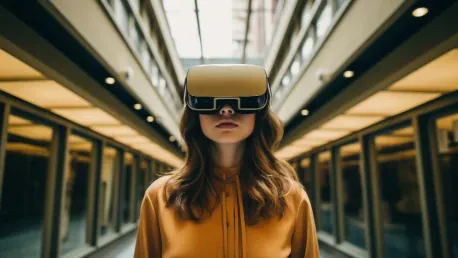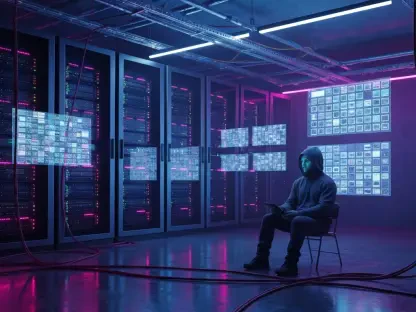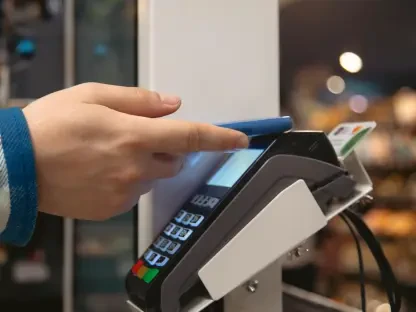The retail industry has evolved dramatically over the years, transitioning from traditional brick-and-mortar stores to the extensive use of e-commerce platforms. Now, augmented reality (AR) and virtual reality (VR) are poised to revolutionize the retail landscape further by merging digital and physical experiences. These technologies create more interactive and personalized shopping experiences, potentially transforming how consumers interact with products and brands.
The Rise of AR and VR in Retail
AR and VR technologies are redefining not only in-store experiences but also digital commerce. Recent data reveals that 40% of consumers are willing to spend more on a product if they can test it out using AR. This trend indicates a strong consumer preference for immersive shopping experiences. Projections suggest that the AR market will surge to $193 billion by 2030, emphasizing that these technologies are on track to become a fundamental aspect of retail.
Augmented reality enhances the shopping experience by overlaying computer-generated images onto the real world. This blending allows customers to access detailed information about products in real time. For example, by aiming a smartphone at a dress in a store, customers can instantly see data about the design, fabric, customer reviews, and style suggestions, enriching their overall shopping experience. This seamless integration of digital elements into the real-world environment can also enable customers to virtually try on accessories like eyeglasses or visualize how painting a room could transform its appearance.
On the other hand, virtual reality immerses users into a completely virtual environment, allowing them to interact with simulated settings. Through VR headsets, customers can virtually enter stores, browse products, inspect items from every angle, and see how these products would be used in real-world scenarios. This full-sensory experience can transport users from their physical surroundings into a digitally created world, providing an unprecedented interactive shopping experience.
Innovative Applications of AR in Retail
The applications of AR in retail are numerous and innovative, each aiming to enhance the customer shopping experience. One prominent application is AR shopping assistants, virtual guides that support customers throughout their shopping journey. These assistants can answer questions, suggest products, and offer styling advice, effectively replacing the need for human sales representatives. The use of AR shopping assistants not only improves the customer service experience but also streamlines the shopping process.
Another groundbreaking application is virtual try-ons, which allow customers to see how apparel, accessories, and cosmetics would look on them without having to physically try them on. This technology increases customer satisfaction and reduces return rates by enabling shoppers to make more informed purchasing decisions. Interactive product descriptions are another vital application of AR, offering dynamic information such as user reviews, 3D visualizations, and demonstration videos. This ensures customers have comprehensive product knowledge and feel more confident in their purchasing choices.
AR-enhanced navigation tools also play a significant role in improving the shopping experience. These tools provide visual cues and directions to help customers navigate large store layouts more efficiently. Additionally, AR can offer step-by-step guidance for product assembly in DIY stores and provide staff with on-the-job training using visual aids for store layouts and product placements. These innovative uses of AR create a more interactive and efficient shopping experience for both customers and retail employees.
Successful Integration of AR and VR by Retail Giants
Several retail giants have successfully integrated AR and VR into their business models, setting a precedent for others in the industry. For instance, IKEA uses AR to allow customers to visualize how furniture will look and fit in their spaces before making a purchase. This application helps customers make informed decisions and enhances their overall shopping experience, demonstrating the practical benefits of AR technology in retail.
In the fashion industry, H&M has launched a virtual showroom that showcases various collections in an immersive digital environment. This initiative not only strengthens their relationship with influencers and media but also provides a unique and engaging way to present their products. Similarly, Sephora has introduced the Virtual Artist, an AR-enabled app that uses facial recognition technology to let users try on makeup products virtually. This app offers a personalized and convenient shopping experience, making it easier for customers to find the right products without the need for physical trials.
These successful implementations of AR and VR demonstrate the potential of these technologies to transform the retail shopping experience. By offering customers innovative and interactive ways to engage with products, these retailers are setting themselves apart in a highly competitive market. The effective use of AR and VR technologies can lead to increased customer satisfaction, higher sales, and a stronger brand presence.
Challenges and Considerations for AR Implementation
Despite the clear advantages of AR and VR in retail, businesses face several challenges in fully leveraging these technologies. One significant challenge is integrating AR with existing systems, which requires specialized hardware, software, and a reliable network. Ensuring compatibility and seamless integration with the current retail infrastructure is crucial for successful implementation. Retailers must invest in the necessary technology and resources to support the adoption of AR and VR.
Another critical consideration is ensuring high-quality AR experiences, which are vital for customer retention and satisfaction. This involves conducting user, usability, and performance testing to identify and address any potential issues before deployment. High-quality AR experiences require meticulous planning and execution to deliver the desired outcomes. Retailers must be prepared to invest in these areas to provide a seamless and enjoyable shopping experience.
Cost is also a significant factor when considering the implementation of AR technology. Retailers must evaluate the potential return on investment, balancing the initial expenses with the long-term benefits. While the upfront costs of adopting AR and VR technologies can be substantial, the potential for increased sales, enhanced customer experiences, and a competitive edge in the market can outweigh these initial expenditures.
The Future of AR and VR in Retail
The retail industry has undergone significant changes over the years, shifting from traditional brick-and-mortar stores to the extensive use of e-commerce platforms. Today, technology continues to drive innovation in retail, with augmented reality (AR) and virtual reality (VR) leading the charge. These cutting-edge technologies are set to dramatically enhance the retail landscape by blending digital interactions with physical shopping experiences. AR and VR offer shoppers a more engaging, interactive, and personalized way to explore products and connect with brands. By allowing customers to virtually try on clothes, see how furniture looks in their homes, or experience a product in a 360-degree view, these innovations help bridge the gap between online and offline shopping. As a result, AR and VR promise to transform consumer behavior, making shopping not only more convenient but also more immersive and enjoyable. These advancements hold the potential to redefine how consumers experience retail, creating unique opportunities for brands to engage with their customers.









